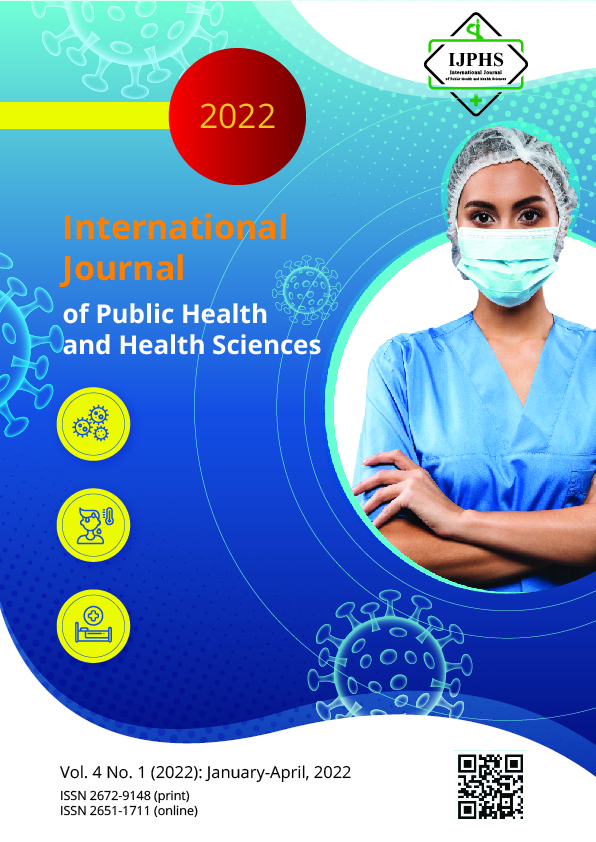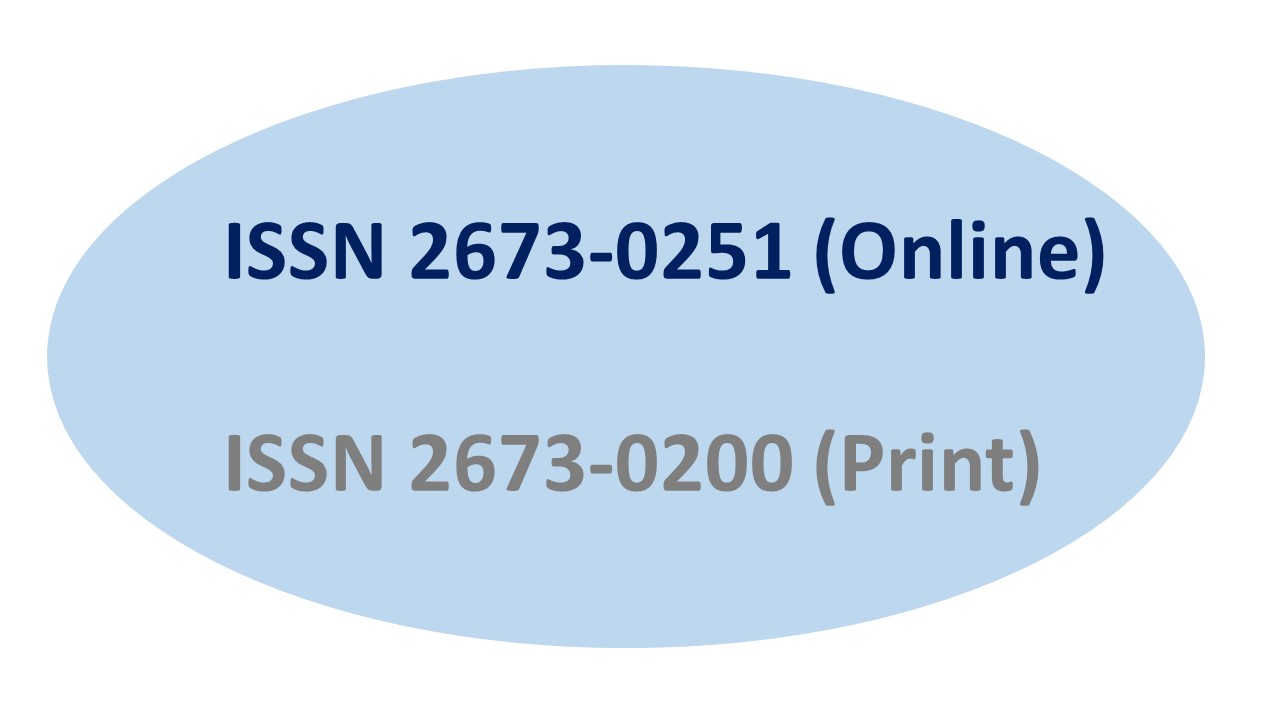Steps and Challenges of Problem-Based Learning
Keywords:
Problem Based Learning, 21st Century skills, Student centered, Self- directed learningAbstract
Problem-Based Learning (PBL) was designed to reduce the hours of conventional lectures in McMaster university, Canada. It is not only providing a lively learning process, but also student-centered approach. Therefore, PBL is considered a tool for the 21st Century skill development (Suwastini et. al., 2021). PBL is not only enabling students to gain their knowledge through self- direct learning, but also other necessary skills, such as, cooperative learning, critical thinking and problem-solving skills (Hung, Jonassen & Liu, 2008). This article aims to elaborate on the seven steps of PBL, roles of teacher and learners in the PBL process, its challenges and how to overcome obstacles for each step of PBL. Furthermore, the PBL implication is also presented in this article.
References
Ali, S. S. (2019). Problem based learning: A student-centered approach. English language teaching, 12(5), 73-78.
Belland, B. R., Glazewski, K. D., & Ertmer, P. A. (2009). Inclusion and problem-based learning: Roles of students in a mixed-ability group. RMLE online, 32(9), 1-19.
Boromarajonani College of Nursing Sawanpracharak Nakhonsawan. (2018). Manual of Problem Based Learning. (n.d.). Boromarajonani College of Nursing Sawanpracharak Nakhonsawan.
Blumhof, J., Hall, M., & Honeybone, A. (2001). Using problem-based learning to develop graduate skills. Planet, 4(1), 6-9.
Boonpleng, W., Thiengtrongdee, A., Norapoompipa, A., Nammuang, S., Lumrod, N., & Hoikum, A. (2018). Effects of Problem-Based Learning on Course Achievement among Baccalaureate Nursing Students. Nursing Science Journal of Thailand, 36(4), 28-38.
Dean, C. D. (1999). Problem-Based Learning in Teacher Education.
Department of Chemical Engineering, McMaster university (2022). Problem- Based Learning (PBL). Retrieved May 11, 2021, Retrieved from https://www.eng.mcmaster.ca/chemeng/problem- based-learning-pbl#What-is-PBL-
Dochy, F., Segers, M., Van den Bossche, P., & Gijbels, D. (2003). Effects of problem-based learning: A meta-analysis. Learning and instruction, 13(5), 533-568.
Hmelo-Silver, C. E. (2004). Problem-based learning: What and how do students learn?. Educational psychology review, 16(3), 235-266.
Lobuteva, A. V., Lobuteva, L. A., Zakharova, O. V., Krivosheev, S. A., & Yermolaeva, A. D. (2019). Specifics of problem-based learning in the pharmaceutical education process. Journal of Advanced Pharmacy Education & Research| Apr-Jun, 9(2).
Machado, J. L. M., Machado, V. M. P., Grec, W., Bollela, V. R., & Vieira, J. E. (2008). Self-and peer assessment may not be an accurate measure of PBL tutorial process. BMC medical education, 8(1), 1-6.
Murphy, S., Hartigan, I., Walshe, N., Flynn, A. V., & O'Brien, S. (2011). Merging problem-based learning and simulation as an innovative pedagogy in nurse education. Clinical Simulation in Nursing, 7(4), e141-e148.
Nendaz, M. R., & Tekian, A. (1999). Assessment in problem-based learning medical schools: A literature review. Teaching and learning in medicine, 11(4), 232-243.
Norman, G. T., & Schmidt, H. G. (1992). The psychological basis of problem-based learning: A review of the evidence. Academic medicine, 67(9), 557-565.
Puttiwanit, N., Puttiwanit, S., & Chitviboon, A. (2020) Learning management guidelines for using PBL with Nursing students. The Southern College Network Journal of Nursing and Public Health, 7(2), 324-335.
Ramlo, S. E., Salmon, C., & Xue, Y. (2021). Student views of a PBL chemistry laboratory in a general education science course. Interdisciplinary Journal of Problem-Based Learning, 15(2).
Savery, J. R. (2015). Overview of problem-based learning: Definitions and distinctions. Essential readings in problem-based learning: Exploring and extending the legacy of Howard S. Barrows, 9, 5-15.
Savin-Baden, M. (2001). The problem-based learning landscape. Planet, 4(1), 4-6.
Schmidt, H. G., Rotgans, J. I., & Yew, E. H. (2011). The process of problem‐based learning: what works and why. Medical education, 45(8), 792-806.
Strobel, J., & Van Barneveld, A. (2009). When is PBL more effective? A meta-synthesis of meta- analyses comparing PBL to conventional classrooms. Interdisciplinary journal of problem-based learning, 3(1), 4.
Suwastini, N. K. A., Puspawati, N. W. N., Adnyani, N. L. P. S., Dantes, G. R., & Rusnalasari, Z. D. (2021). Problem-based learning and 21st-century skills: Are they compatible?. EduLite: Journal of English Education, Literature and Culture, 6(2), 326-340.
Sybing, R. (2019). Making connections: Student-teacher rapport in higher education classrooms: Student-teacher rapport in higher education classrooms. Journal of the Scholarship of Teaching and Learning, 19(5).
Hung, W., Jonassen, D. H., & Liu, R. (2008). Problem-based learning. Handbook of research on educational communications and technology, 3(1), 485-506.
Van den Bossche, P., Gijbels, D., & Dochy, F. (2000). Does problem based learning educate problem solvers. In A meta-analysis on the effects of problem based learning. Newport Beach, CA: VII EDINEB Conference.
Woods, D. R. (1996). Problem‐based learning for large classes in chemical engineering. New Directions for Teaching and Learning, 1996(68), 91-99.
Wood, D. F. (2003). Problem based learning. Bmj, 326(7384), 328-330.
Downloads
Published
Issue
Section
License
Copyright (c) 2022 International Journal of Public Health and Health Sciences

This work is licensed under a Creative Commons Attribution-NonCommercial-NoDerivatives 4.0 International License.
If the manuscript is accepted for publication, copyright of the article shall be assigned to the IJPHS. After acceptance of a manuscript, the authors will be requested to complete a copyright transfer agreement form







